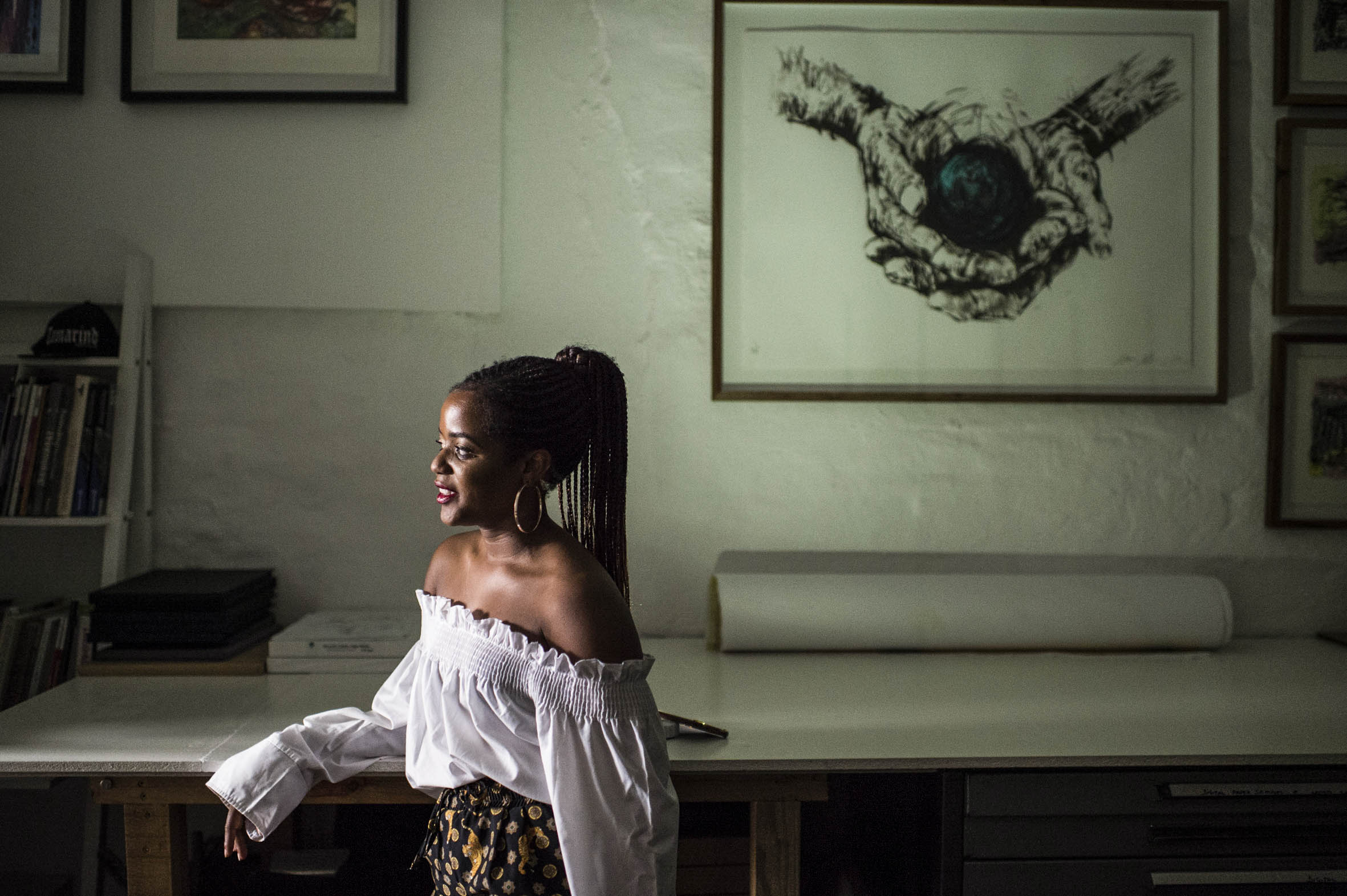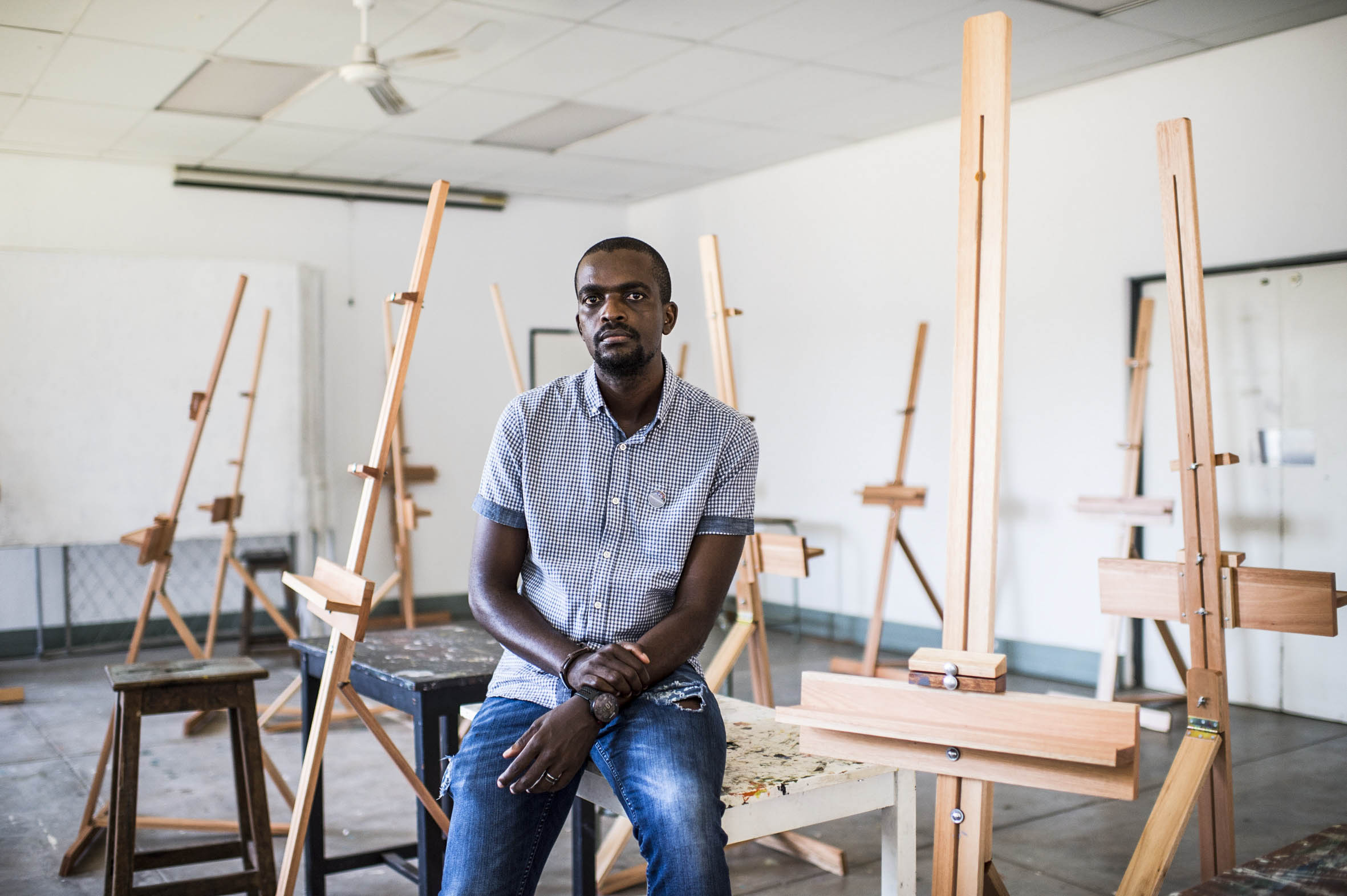Dr Same Mdluli urges educators and scholars to conduct research and write in the missing pieces of art history. (Delwyn Verasamy/M&G)
A few weeks ago, Standard Bank Art Gallery’s head curator Dr Same Mdluli facilitated a walkabout for A Black Aesthetic: A View of South African Artists (1970-1990). There, she argued that conversations in academia have sidelined black art history.
“You know there are four books on [Gerard] Sekoto, two on Dumile [Feni] and hardly anything on the likes of Ephraim Lagae and yet the gravitas of all these artists are equally the same in terms of the influence they had and the body of work that they created. That’s the work I’m posing to the students and scholars. Write this history and write about these artists.”
A Black Aesthetic challenges South Africa’s dominantly white art history landscape by inviting academics, artists, scholars and the public at large to critically engage with the black contemporaries of Cecil Skotnes, Walter Battiss, Hendrik Pierneef and Alexis Preller. These include Welcome Koboka, Winston Saoli, Louis Maqhubela, George Pemba and Gladys Mgudlandlu.
In response to the call, the Mail & Guardian looked to art educators and scholars to see what art education can and has offered its recipients.
In As by Fire: The End of the South African University, rector and vice-chancellor of the University of the Free-State, Jonathan Jansen, writes that many people fail to realise that all forms of education are exclusionary by nature. After studying fine art at the Wits School of Arts and curation at the University of Cape Town’s Michaelis, curator Ruzy Rusike can attest to this.

After studying at two art institutions, Ruzy Rusike can attest to education’s exclusionary nature. (Delwyn Verasamy/ M&G)
“Wits shaped me in terms of my thinking whereas UCT helped me understand the market. Wits encourages you to be more courageous in your mark-making. But a lot of young contemporary artists are from Michaelis,” Rusike laughs.
Currently studying towards a BA honours in fine art at Wits, Oratile Konopi also acknowledges the institution’s academic focus. “We are continually bombarded with theory and ideologies … you often find yourself floating in abstract ideas. My education, especially the demand for a higher order of thinking and criticality, somehow distances me from the actual people I am trying to relate to.”
Konopi then goes on to add that although he understands that his education is meant to address the imbalances of the past by equipping him with knowledge, there is a need for it to incorporate the economic know-how he will need to sustain a creative career.
“In our faculty, we’re scared to talk about money and unfortunately when living in a society that operates with it you don’t know how to value your labour. I am still not sure about what kind of mobility the actual degree gives me in society.”
In addition to universities, colleges and universities of technology, South African community art centres serve aspiring artists who are unable to attend those more established institutions. Back in the day, during the mid-20th century, these state-funded art centres ignited the black artist’s sociopolitical DNA by providing them with tools and platforms to aestheticise their political assertions.
Artists like Dumisani Mabaso, Anthony Nkosi, Durant Sihlali and Ephraim Ngatane spent a short period of their artistic lives cultivating the necessary skills at centres such as the Hammanskraal Art Project, Polly Street and Jubilee art centres. Today, after 27 years, Artist Proof Studio in Johannesburg continues to fill this gap with a hands-on approach that includes drawing, printmaking, business skills and visual literacy classes. Its alumni include Colbert Mashile, Mmakgoba Helen Sebidi and David Koloane. The art centre offers a subsidised three-year, full-time art programme along with a fourth-year work placement to further equip its students. It only has capacity for 80 to 100 full-time students.
Every institution has its limits because curriculums and syllabuses are created by a process of selection and omission at the hands of heads of departments, lecturers and teachers, who all come with their own set of prejudices, dispositions and objectives. This is according to Pfunzo Sidogi, who has a decade-long career in art education. Sidogi is a lecturer at the Tshwane University of Technology’s department of fine and applied arts and was a junior lecturer at the University of South Africa’s department of art history, visual arts and musicology.

Career curation: Pfunzo Sidogi says art education needs to evolve from its dated practices and shed its exclusionary nature. (Delwyn Verasamy/ M&G)
Instead of focusing on who does what, Sidogi suggests that the most crucial component to interrogate in all programmes — whether it’s strength is theory, art practice or market readiness — involves shedding art education of “colonial and patriarchal forces”.
When asked whose duty this is, Sigodi says the onus is on the educators. “Our primary role as art educators is to provide students with the necessary foundational skills and competencies they need to make a meaningful impact in the industry. We need to challenge and stretch the students,” he says.
But he is aware of the fact that not all educators are black and not all of them have this conviction. For this reason, Sidogi encourages students to play an active part in their curriculum formulation because they cannot passively consume what is meant to shape them.